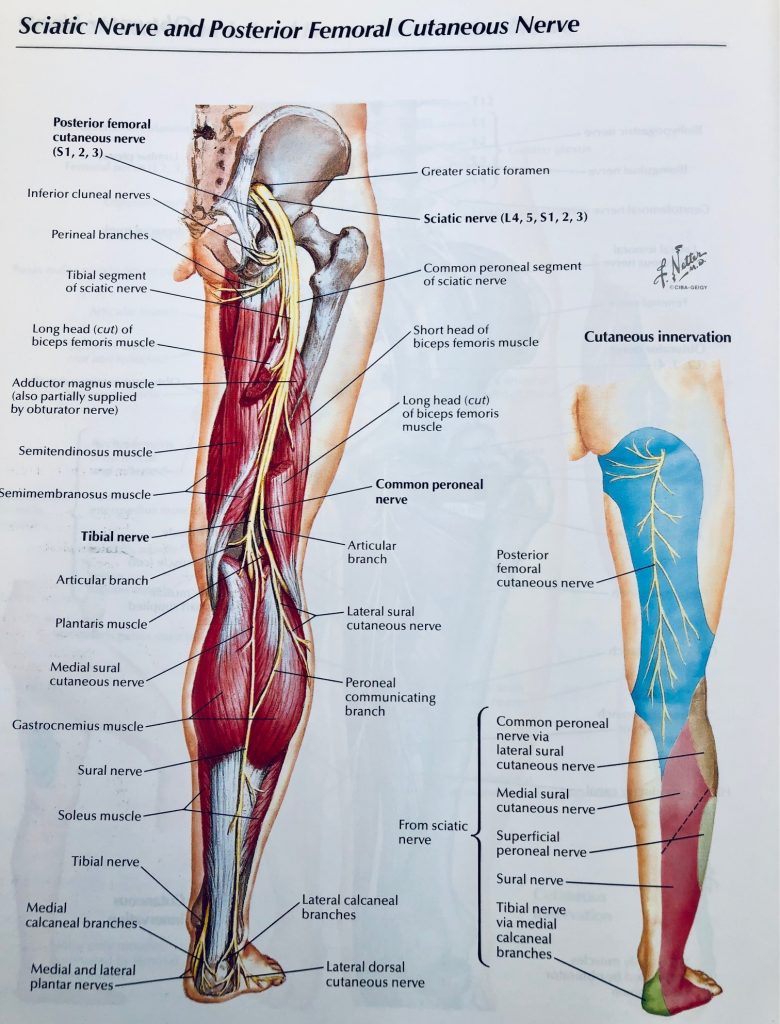Irritation to the sciatic nerve is among the most painful conditions a person can endure. However it is often misunderstood, so let’s examine this in more detail.
The sciatic nerve is the biggest nerve in the body. It originates from nerve roots that exit the lumbar spine and sacrum (tailbone), passes through the pelvis and posterior thigh before it divides into 5 major branches once it gets to the back of the knee. The picture below is from Atlas of Human Anatomy, by Frank Netter:

Because of its size and length, there is potential for the nerve to get irritated by many, many structures.
The most common sources of sciatic nerve impingement (pinching, irritation, etc.) are:
-Bulging, protruding, or herniated disc, most commonly the L5-S1 disc.
-Bone spurs and arthritic spinal joints.
-Spasm of the piriformis muscle in the hip(buttock).
Successful treatment of sciatic nerve pain relies on accurately determining the location and cause of the nerve irritation.
Diagnosing sciatica in the clinic relies on a good history and examination. Often, a patient’s accurate description of how the pain began, where the pain is, when it occurs, and other factors point us in the right direction. The physical exam confirms this through what are referred to as “provocative tests,” which reproduce the patient’s pain. The most common test we use in the office is called Lindner’s test, or the seated straight leg raise test. During this test, the patient sits on the exam table, chin to chest, while the examiner extends the leg affected by the sciatica. This test is highly sensitive, meaning it will be positive most of the time in a diagnosis of sciatica. Other tests may be performed, especially if the case is not straightforward. X-ray and MRI may be needed to get to the root cause.
Upon arriving at a working diagnosis of sciatica, a treatment plan can be developed. In our office, we have an array of therapies and techniques to address sciatica. Our most common course of action is to use modalities to alleviate pain and inflammation and a specific chiropractic technique to reduce the nerve impingement (pinching). We employ two types of electric stimulation, one to interrupt pain where the nerve roots exit the spine, another to calm down the nerve pain in the lower extremity. We also use ultrasound where the nerve root exits the spine to directly reduce inflammation of the nerve root. These modalities work together to set up short and long term pain relief. As an alternative, acupuncture may be used, or in the case of piriformis related sciatica (piriformis syndrome), we may suggest dry needling.
In the majority of cases, we utilize a chiropractic technique called Flexion/Distraction to directly reduce nerve impingement. Performed on a specialized table, the process involves focused, dynamic traction to alleviate the pressure on the nerve.
Home care for sciatica involves therapeutic exercises designed to reduce pain and spasm and improve mobility along with activity modification to minimize aggravation to the issue.